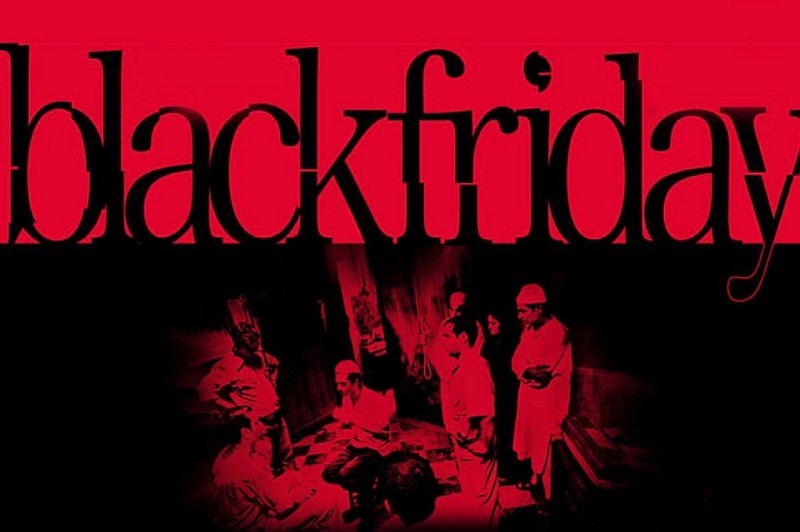
Bollywood has provided us with countless memorable action scenes over the years, frequently involving frantic car chases, daring stunts, and heroics that seem out of this world. In Anurag Kashyap's "Black Friday" (2007), a modest yet ground-breaking chase sequence did, however, emerge amid these grand spectacles. The chase scene in the movie, which lasts seven minutes, is one of the longest in Bollywood history and a superb illustration of realism and realistic storytelling. It differs from other movies because it doesn't use vehicles, elaborate stunts, or special effects. Instead, it develops through frantic pursuit and constant running in Mumbai's slum areas, producing a visceral cinematic experience that still has an impact on viewers.
The 1993 Bombay bombings were a series of planned terrorist attacks in Mumbai (then known as Bombay), and the inspiration for the crime drama movie "Black Friday" was these events. Anurag Kashyap's film, which he also directed, is renowned for its unflinching depiction of the events leading up to the bombings and the subsequent investigations.
The Mumbai Police launch a massive manhunt to find Tiger Memon, one of the key suspects in the bombings, and in the midst of this grim story, the movie includes a remarkable chase sequence.
The chase scene in "Black Friday" is a cinematic achievement that exemplifies the director's vision, the actors' commitment, and the movie's dedication to realism. It lasts for more than 7 minutes and is set in Mumbai's congested slum areas and winding, narrow lanes. Its lack of reliance on typical action movie clichés like car chases, explosions, or martial arts is what makes it so exceptional. Instead, it shows a relentless foot chase.
The action starts when Tiger Memon's whereabouts in a crowded slum are reported to the police. The officers enter the area and are greeted by a maze-like network of winding staircases, cramped homes, and tiny lanes. Tiger Memon and his companion then start the chase in an effort to avoid being apprehended.
The audience is fully immersed in the excitement of the pursuit as the chase takes place thanks to the camera staying close to the characters. The actors give outstanding performances that perfectly capture their characters' fright and desperation, especially Pavan Malhotra as Tiger Memon.
This episode's dedication to realism is what makes it unique. The depiction of the slum areas captures the grimy and cramped atmosphere with unwavering authenticity. The chase feels more like an actual cat-and-mouse game played in the real world than it does like Hollywood-style heroics or dramatic leaps.
As there is no background music, the slum's natural sounds—children playing, vendors haggling, and the commotion of daily life—serve as the soundtrack, which heightens the sense of authenticity. Using this intentional choice, the chase's grim reality is fully conveyed to the audience.
The team's technical mastery is demonstrated by the 7-minute continuous take. Natarajan Subramaniam, better known as "Natty," the director of photography, captures the frantic energy of the chase flawlessly. The sequence has a documentary-like feel to it thanks to the handheld cameras and long takes.
The sequence was shot in one take by director Anurag Kashyap, which maintained the pace and tension throughout. It's a risky decision that pays off because it keeps the audience on the edge of their seats.
"Black Friday" won praise from critics for its performances, storytelling, and realistic depiction of a troubled period in Mumbai's history. Particularly, the 7-minute chase scene had a profound effect on both viewers and the filmmakers.
It proved that Bollywood was capable of creating exciting and real action sequences without resorting to opulent spending or tired tropes. For realism and immersion in Indian film, it established new benchmarks.
A significant piece of Bollywood cinema is the "Black Friday" chase scene's seven-minute running time. Instead of relying on over-the-top action, it defies convention by focusing on realism, grit, and superb technical execution. It creates a visceral and unforgettable cinematic experience by submerging the audience in Mumbai's cramped slum lanes.
The chase scene in "Black Friday" is still praised for its originality and dedication to truthful storytelling more than ten years after it was released. It serves as evidence of how effective film can be at capturing the ferocity of human drama even in the most banal and chaotic of circumstances.
Shreyas Talpade's Journey in Bollywood: Balancing Fame, Friendship, and Foes
Abhay Deol's Best: The Top 10 Movies That Set Him Apart
Raj Kapoor's Artistic Sojourn: Amsterdam's Muse and the Red Light Insight